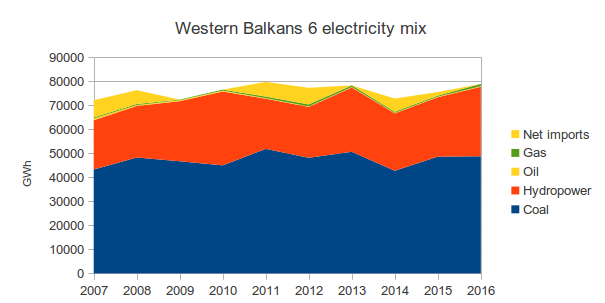Western Balkans power sector future scenarios and the EBRD

Briefing | 16 November 2018
The Western Balkans, as a region that represents both a post-Socialist economy and EU accession region, can benefit greatly from up-to-date insights by the EBRD on how to move its energy transition forward more rapidly. Its decision-makers have not yet recognised the potential of energy savings, solar and wind, and need support to do so. The EBRD’s new draft Energy Strategy contains a case study on electricity generation in the Western Balkans and this paper analyses that case study. We have welcomed the EBRD’s action to halt coal financing, an action which has been important for our region, and its support for developing wind projects in the region. We now ask the Bank to ensure that the cure is not worse than the disease, and that decarbonisation means a transition to a truly efficient, decarbonised and sustainable energy system. Specifically:
- The Scenarios need to include an examination of the energy savings and demand response potential
- It is hard to believe that gas expansion is the most cost-effective option, given the costs of new gas infrastructure and the need to decarbonise the energy sector, and this needs to be re-examined.
- The danger of gas investments crowding out investments in renewable energy and energy savings needs to be examined.
- Additional hydropower capacity should be included only to the extent that it can be carried out in line with the EBRD’s Environmental and Social Policy and the EU Water Framework Directive and Birds and Habitats Directive.
- It should not be included in countries that are already suffering from serious fluctuation in hydropower generation due to changing hydrological conditions.
Location: Albania | Bosnia and Herzegovia | Kosovo | Macedonia | Montenegro | Serbia
Project: EBRD/EIB energy policy review
Tags: hydropower | renewables
Never miss an update
We expose the risks of international public finance and bring critical updates from the ground. We believe that the billions of public money should work for people and the environment.
STAY INFORMED
